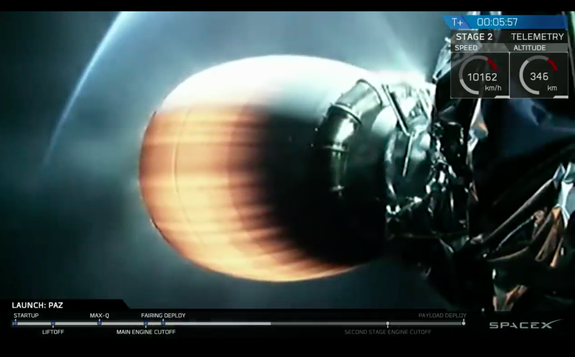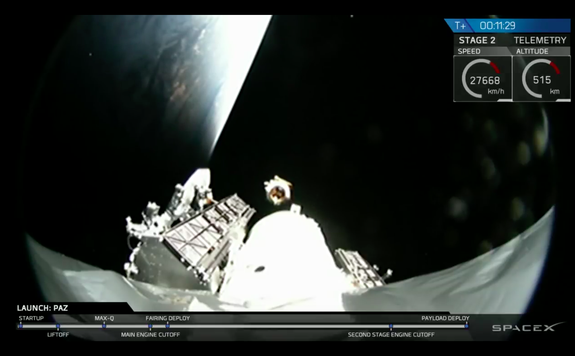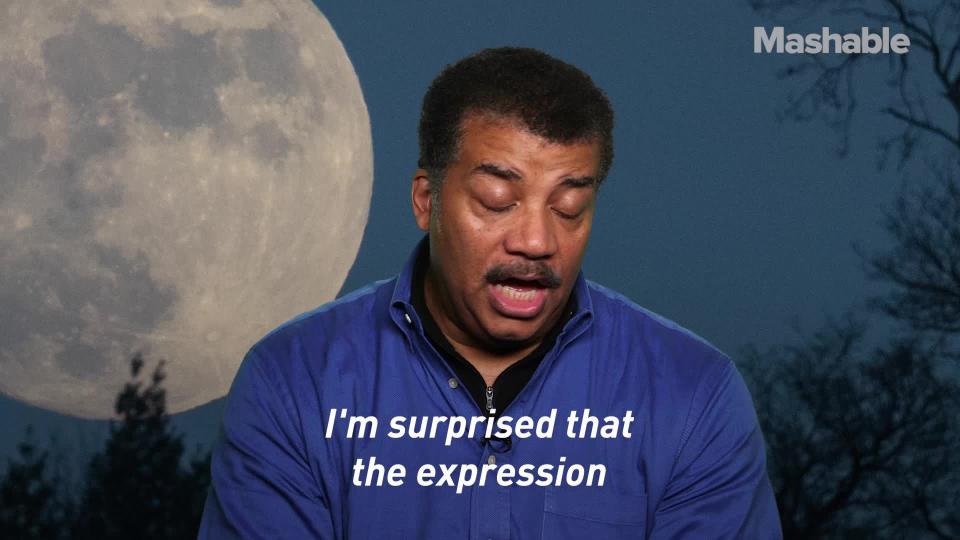SpaceX boat tries to catch pricey rocket nosecone in the Pacific Ocean, but misses

After SpaceX successfully blasted three satellites into space early Thursday morning, the company tried to catch the Falcon 9 rocket's expensive nosecone, also known as a fairing, on a ship in the Pacific Ocean. The vessel, named "Mr. Steven," was outfitted with a giant net.
According to SpaceX CEO Elon Musk, the boat missed catching the fairing by "a few hundred meters," but he thinks there's a simple fix: Bigger parachutes to better control the parachuting fairing.
Missed by a few hundred meters, but fairing landed intact in water. Should be able catch it with slightly bigger chutes to slow down descent.
— Elon Musk (@elonmusk) February 22, 2018
The fairing, which sheltered and released the payload during the rocket launch, parachuted down to the Pacific Ocean. A GPS guidance system helped guide the parachute close to the long, outstretched metallic arms of the awaiting ship.
Assuming the nosecone is in good shape, SpaceX may still try and retrieve it from the water.
A post shared by Elon Musk (@elonmusk) on Feb 22, 2018 at 7:36am PST
Recovery of the rocket fairing is aimed at bringing down the cost of access to space, since this particular part of the rocket costs between $5 and $6 million dollars.
SpaceX famously lands its rocket boosters back on Earth and reuses them in subsequent launches, but it never before attempted to catch a rocket's fairing. SpaceX plans to outcompete its rocket rivals by reusing most of its rockets, as opposing to building new components for each launch.
SEE ALSO: Elon Musk's 'Starman' Tesla Roadster isn't your typical piece of space junk
This launch, for example, featured a Falcon 9 rocket booster that had previously been to space in August 2017. SpaceX decided not to recover the rocket for a potential third launch, however.
A post shared by Elon Musk (@elonmusk) on Feb 22, 2018 at 6:07am PST
Instead, the rocket fell back to Earth and crashed into the Pacific Ocean. According to SpaceX firmware engineer Tom Praderio, "SpaceX is making room for its next iteration of Falcon 9 rockets," so it had no reason to land and reuse the rocket for a third launch.

Image: spacex
The Falcon 9 rockets have proven to be quite reliable, as SpaceX launched them into space 18 times last year, with no failures. The company plans to surpass these launch numbers this year.
Besides the primary payload — a Spanish satellite that can capture extremely high-resolution images of Earth — SpaceX launched two of its own microsatellites. These satellites are a test, but likely the first of thousands of internet-beaming satellites called Starlink, which is intended to provide high-speed internet access to the web-deprived corners of the world, sometime in the early to mid 2020s.
Today’s Falcon launch carries 2 SpaceX test satellites for global broadband. If successful, Starlink constellation will serve least served.
— Elon Musk (@elonmusk) February 21, 2018
The Federal Communications Commission has yet to approve the SpaceX Starlink constellation, but last week FCC chairmen Ajit Pai urged commissioners to approve the bold space internet project.

Image: spacex
WATCH: Neil DeGrasse Tyson explains what 'shoot for the moon' actually means


